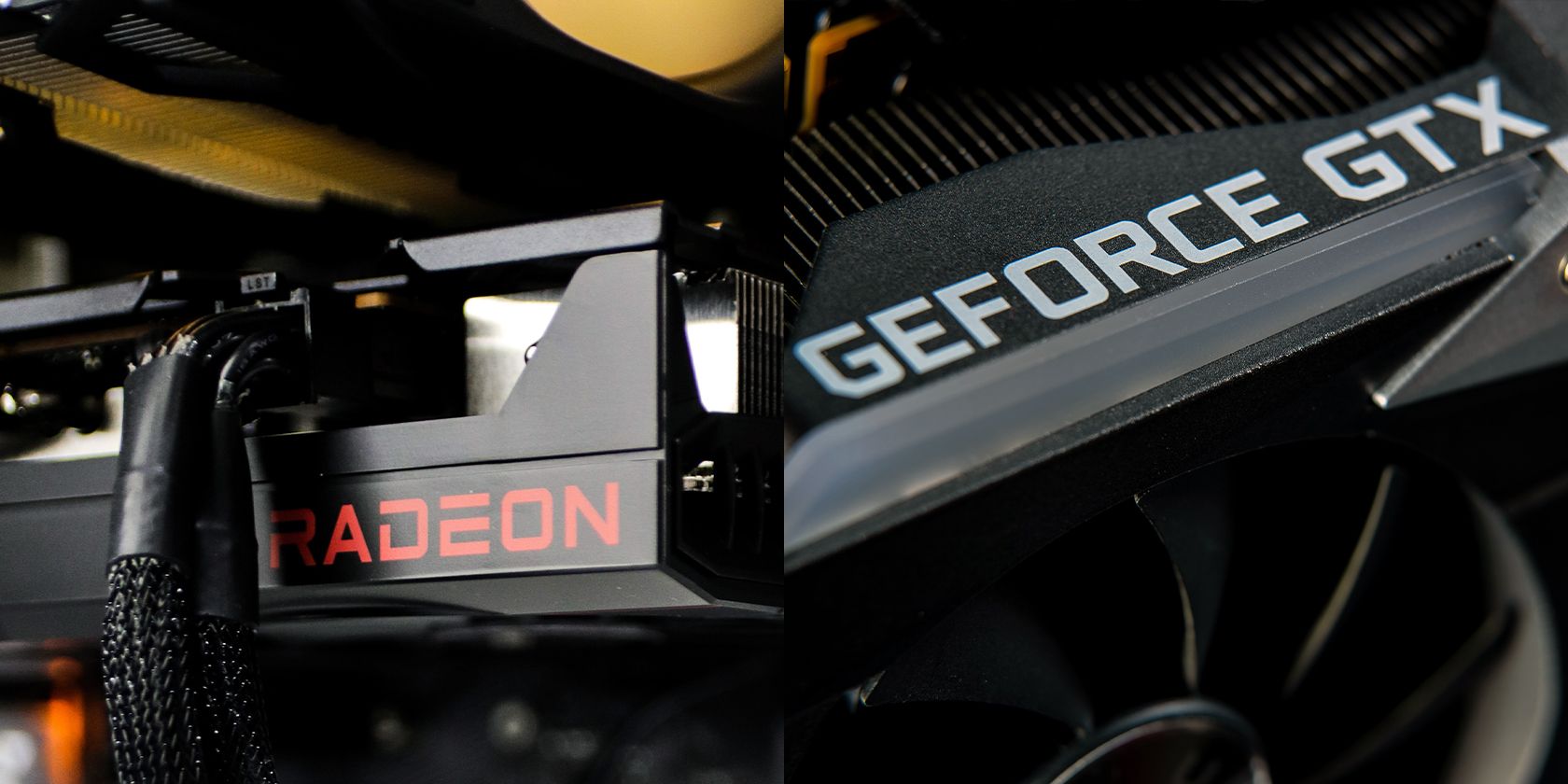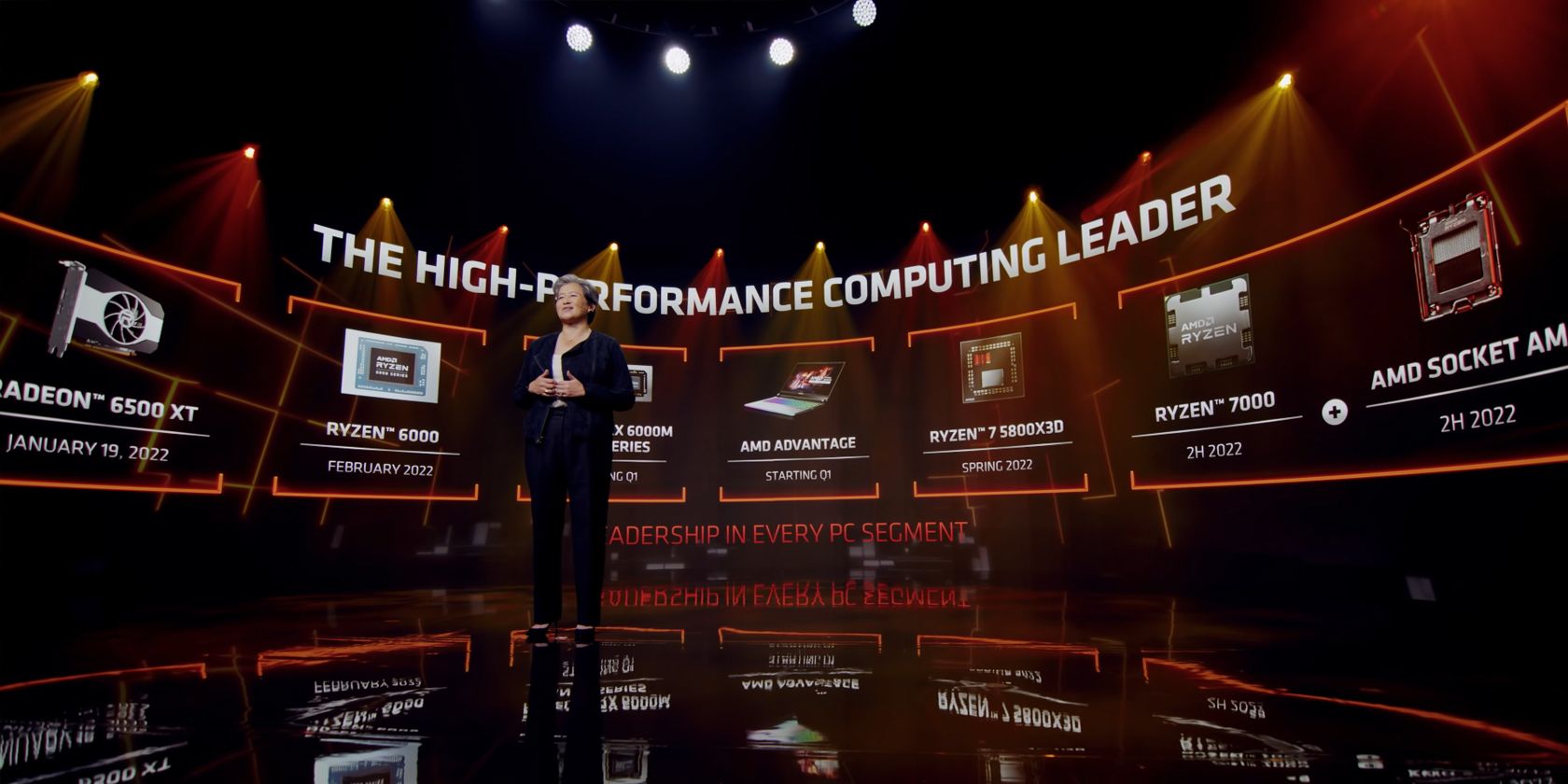Many usually pair high-end and mid-range GPUs when comparing video card benchmarks. This lets you see how companies make the most of their technology and deliver a GPU with an outstanding balance between performance and cost.
But what if you need a GPU just for the sake of getting one? Or you're looking for a video card but don't have enough cash to splurge even on a 30-Series GPU?
Fret not; we'll help you pick between AMD's and NVIDIA's most affordable GPUs.
Introducing the AMD Radeon RX 6400 and the NVIDIA GeForce GTX 1630
While we're usually awed when AMD or NVIDIA launches their latest generation GPU, only a small number of users actually buy them. If you look at the Steam Hardware & Software Survey for April 2023, the two most popular video cards are the GTX 1650 and GTX 1060—the most affordable GPUs of their generation at launch.
Because of this, we often ask, "Do you really need a powerful GPU?" So, we will introduce our two contenders for today: the RX 6400 and the GTX 1630. These are AMD's and NVIDIA's most affordable GPUs you could buy brand-new at the time of writing.
Both launched in 2022, the former in January and the latter in June. These two will be your primary options if you're looking for a brand-new GPU while sticking to a tight budget.
RX 6400 vs. GTX 1630: Specifications
Before everything else, we should compare the specifications of these two video cards.
|
AMD Radeon RX 6400 |
NVIDIA GeForce GTX 1630 |
|
|
Release Date |
January 19, 2022 |
June 28, 2022 |
|
Architecture |
RDNA 2.0 |
Turing |
|
Process Node |
6nm |
12nm |
|
Bus Interface |
PCIe 4.0 x4 |
PCIe 3.0 x8 |
|
Base Clock Speed |
1,923MHz |
1,740MHz |
|
Boost Clock Speed |
2,321MHz |
1,785MHz |
|
Memory Size |
4GB |
4GB |
|
Memory Type |
GDDR6 |
GDDR6 |
|
Memory Bus |
64-bit |
64-bit |
|
Memory Bandwidth |
128 GB/s |
128 GB/s |
|
Shading Units |
758 |
512 |
|
Ray Tracing Cores |
12 |
- |
|
TDP |
53W |
75W |
|
Outputs |
1x HDMI 2.1 / 1x DP 1.4a |
1x DVI / 1x HDMI 2.0 / 1x DP 1.4a |
On paper, the RX 6400 looks like it performs better despite being six months older than the GTX 1630. This is because it has a smaller process node, a faster bus interface, faster clock speeds, and even hardware ray-tracing support. And, more surprisingly, it has a lower TDP despite having better specifications.
So, what kind of power does this hardware deliver?
RX 6400 vs. GTX 1630: Theoretical Performance
After comparing the hardware specifications of the two cards, let's check out their computational performance.
|
AMD Radeon RX 6400 (TechPowerUp) |
NVIDIA GeForce GTX 1630 (TechPowerUp) |
|
|
Pixel Rate (GPixels/s) |
74.27 |
28.56 |
|
Texture Rate (GTexels/s) |
111.4 |
57.12 |
|
FP16 (TFLOPS) |
7.130 |
3.656 |
|
FP32 (TFLOPS) |
3.565 |
1.828 |
Based on their specifications, these numbers confirm our suspicions—the AMD Radeon RX 6400 performs better than the NVIDIA GeForce GTX 1630. But we didn't expect the RX 6400 to beat the GTX 1630 by over two times in its performance.
After all, their clock speeds aren't that far off, and both GPUs have the same memory size. Still, this must be the effect of the smaller process node AMD uses for RDNA 2.0.
With this information in mind, let's look at the real-world gaming performance of these cards.
RX 6400 vs. GTX 1630: Gaming Benchmarks
The benchmarking machines used a Ryzen 9 5950X processor with 32GB of RAM. Since these GPUs are budget, entry-level offerings, the games are also set to 1080p. So, let's see how the two GPUs compare when running some of the most popular titles.
|
AMD Radeon RX 6400 (TechSpot) |
NVIDIA GeForce GTX 1630 (TechSpot) |
|||
|
Average FPS |
1% Lows |
Average FPS |
1% Lows |
|
|
Assassin's Creed Valhalla (Medium Quality) |
54 |
41 |
32 |
24 |
|
Shadow of the Tomb Raider (Highest Quality) |
53 |
42 |
30 |
24 |
|
Watch Dogs: Legion (Medium Quality) |
57 |
45 |
35 |
22 |
|
Tom Clancy's Rainbow Six Siege (Ultra Quality) |
95 |
54 |
72 |
58 |
|
F1 2021 (High Quality) |
72 |
57 |
50 |
41 |
|
Horizon Zero Dawn (Favor Quality) |
49 |
41 |
29 |
23 |
|
Far Cry 6 (Medium Quality) |
67 |
50 |
37 |
33 |
|
DOOM Eternal (Ultra Quality) |
52 |
46 |
57 |
45 |
|
Resident Evil Village (Balanced Quality) |
65 |
52 |
32 |
16 |
|
Death Stranding (Default Quality) |
71 |
66 |
40 |
31 |
|
Hitman 3 (Medium Quality) |
67 |
60 |
27 |
25 |
|
Cyberpunk 2077 (Medium Quality) |
37 |
34 |
22 |
20 |
|
Average |
61.58 |
49.00 |
38.58 |
30.17 |
The data shows that the AMD Radeon RX 6400 outperformed the NVIDIA GeForce GTX 1630 in almost all titles, save for one. Furthermore, the former consistently performed better than the latter in 1% lows.
If you temper your expectations, the RX 6400 is a perfectly usable gaming card. However, the GTX 1630's performance leaves much to be desired. Although its average FPS and 1% lows are at a usable 38.58 and 30.17 FPS, respectively, the 1% lows on many titles tested on it hit 30 FPS and below, making for choppy and stuttery gaming.
RX 6400 vs. GTX 1630: Price and Value
Since these are entry-level cards, we should expect much performance. But what about their cost? Are these video cards priced according to their performance? Or are you paying too much while getting too little?
First, let's compare their launch and current prices. The AMD Radeon RX 6400 had a $159 launch price. While this is high compared to other entry-level GPUs from previous generations, we have to consider that it was launched during the tail-end of the global pandemic and when crypto mining was still high.
The less powerful NVIDIA GeForce GTX 1630 launched six months later at $169, $10 higher than AMD's cheapest brand-new GPU. Many found these prices outrageous, so we were all asking, "Why are graphics cards so expensive?"
But because some time has passed since these GPUs launched, let's check out their prices at the time of writing. First, let's look at the GPUs from MSI to get comparable model ranges. For example, the MSI Gaming Radeon RX 6400 Aero ITX 4G is listed at $154, while the MSI Gaming GeForce GTX 1630 Aero ITX 4G OC goes for $163.
So, the prices for both GPUs have fallen, but not significantly. Let's now check their price-to-performance ratio at the time of writing: the RX 6400 costs $2.51 per average FPS, while the GTX 1630 costs $4.22 per average FPS.
Not only is the RX 6400 more affordable than the GTX 1630 at launch and at the time of writing, but it also provides better value. That's why many say the GeForce GTX 1630 isn't worth buying.
RX 6400 vs. GTX 1630: Which Budget GPU Should You Buy?
Based on our analysis, you should buy the RX 6400 if you're looking to get an entry-level GPU. Not only is it more affordable than the GTX 1630, but it also performs far better and delivers better value.
The gaming benchmarks show that many recent titles are simply unplayable with the GTX 1630. So, unless you're using your entry-level gaming PC to play old titles, you should avoid it. It's so bad that even the AMD Radeon 680M integrated GPU on the Ryzen 7 6800U CPU outperforms it, as tested by TechPowerUp.
Are Budget GPUs Worth It?
However, why don't you go up one tier (or even two tiers) at these prices? For example, the NVIDIA GeForce RTX 1650 had a $149 launch price—cheaper than the GTX 1630's $169. And if you can save $40, the 4GB RX 6500 XT might be a better option.
Let's check out the prices of these cards at the time of writing. You can buy a PowerColor Radeon RX 6500 XT ITX for $149.99, while the ASUS Phoenix GeForce GTX 1650 OC costs $169.99. The 6500 XT performs better than both the GPUs we're testing today while being more affordable. Or you could spend more and get a GTX 1650—which we won't recommend as the 6500 XT still performs better.
Alternatively, you can purchase a second-hand GPU. Although there are risks attached to it, you can save a lot of money if you know what you're doing. For example, you can get a used NVIDIA GeForce RTX 2060 at around the same price as a brand-new GTX 1650. Not only do you get better performance, but you also unlock ray tracing with the RTX 2060.
The Most Affordable GPU Isn't the Best Option
If you're in a pinch and need a budget GPU, the 6400 XT or the GTX 1630 are great options. But if you want to use it for gaming, we recommend you go one step up the GPU ladder or choose a used video card instead.
After all, what's the point of getting a new video card if you can't use it to play games well? You'll throw your hands up in frustration and spend more money upgrading to a better GPU in the near future.



